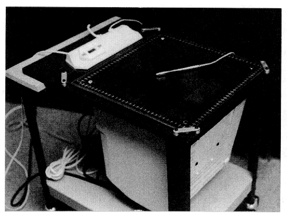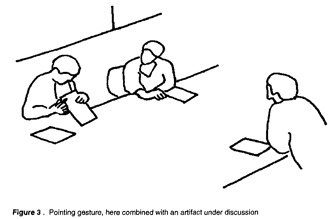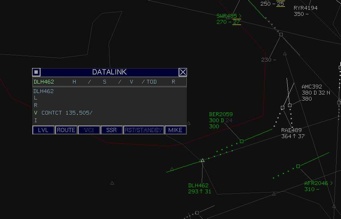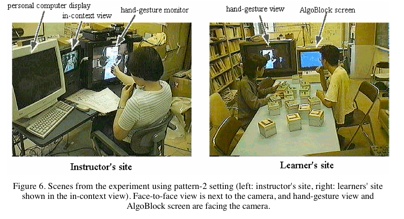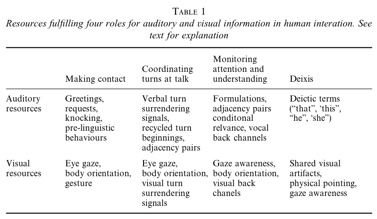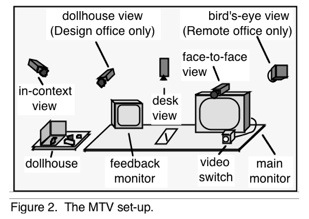Fussell, S. R., Setlock, L. D., Yang, J., Ou, J., Mauer, E., and Kramer, A. D. I. Gestures over video streams to support remote collaboration on physical tasks. Human-Computer Interaction 19, 3 (2004), 273–309. [pdf]
————-
This paper summarizes two important study of the Fussell et al. on gestures. The authors recognize the importance of gestures for remote collaboration and distinguish between pointing gestures and representational gestures. This second group can be further divided in iconic representation, spatial gestures and kinetic gestures.
The article starts by critiquing previous approaches to enable remote gestures, sometimes oversimplyfing conclusions such as that systems like ClearBoard are too expensive and therefore impractical for most collaborative work. Also, the author choose to adopt surrogate approach to remote gestures, expressing the communicative intents through alternative means. The reason of this choice over a more direct view of the gesture are not discussed.
In a first study, the authors compared a face-to-face interaction versus a remote collaboration where the helper could indicate parts of a model using a telepointer mechanism. Contrary to the hypothesis they found that adding the pointer was not sufficient to improve performance over that of the video-only condition. They discussed possible explaination like the fact that the cursor tool was too limited in functionality. Also they hypothetized that the part of the task requiring effective pointing represented only a small percent of the total and therefore was not influent.
In the second experiment they evaluated the DOVE system. The compared video-only against the DOVE setup with manual erasure and with automatic erasure. They found that performance was best for this third condition. They also found that pointing gestures were mostly prevalent.

